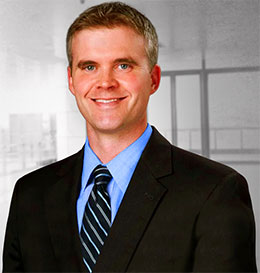
Shoulder Surgery Specialist
Shoulder surgery is recommended for various conditions like shoulder pain, shoulder arthritis, complex fractures, shoulder dislocation, rotator cuff tears or AC joint injuries when conservative treatments fail to provide relief. Brody Flanagin, MD is a shoulder surgery specialist in Dallas and Frisco, Texas. Dr. Flanagin is trained in different types of shoulder surgeries that include arthroscopic surgery and open shoulder surgery. Contact Dr. Flanagin’s team at to know more about your treatment options and make an informed decision!
Open Shoulder Surgery - Shoulder Pain (Dallas, Texas)
About Open Surgery
When possible, using an arthroscopic approach for shoulder surgery is the preferred method. Not only is it less invasive, but it offers great outcomes, especially with today's advanced technology, surgeon skill, and training. However, not all injuries can be treated arthroscopically. Some conditions will require an open approach, which allows Dr. Flanagin greater access into the shoulder joint. The open surgical approach is reserved for complex rotator cuff tears, severe ligament damage or higher grade fractures, as well as for total shoulder replacements. In some cases, the open approach is the only way to repair the shoulder damage.
While a complete recovery can still be achieved using this method, it does result in a longer recovery, noticeable scarring, and offers a higher risk than the arthroscopic approach. Orthopedic shoulder surgeon, Dr. Brody Flanagin, performs both arthroscopic and open surgery depending on the surgical case. He will choose the surgery he believes will offer his Dallas area patients the most effective outcome, based on the severity of their condition or injury.
Arthroscopic Vs. Open
Arthroscopic surgery and the open surgical approach vary greatly. When discussing traditional open surgery, which used to be the only way to perform shoulder surgery, it helps to understand the difference between the two methods.
Arthroscopic surgery is minimally invasive, meaning, the incision are tiny, unlike the traditional open approach. During arthroscopic shoulder surgery, 2-3 tiny keyhole incisions are created, just large enough so that the arthroscope (camera) and surgical tools can pass through. The camera is perhaps the most important aspect of this approach as it allows the surgeon a precise and accurate visual of the inside of the shoulder joint so that the necessary repairs can be completed. This same work used to be done using the open approach, which required large incisions and a greater opening into the joint.
Open shoulder surgery does require larger incisions, as stated above. In some cases, this is necessary to make the repair. The downside to this approach is that in many cases, nearby tissue and muscle are manipulated or cut through to reach the damage. So once the surgery is over, the recovery is longer because there is more damage (for example, an additional muscle that needs to heal) along with the repair. With arthroscopic surgery, the additional step of cutting through the additional muscle is bypassed. The camera and tools allows the surgery to be performed directly where the repair is needed.
Determining Which Surgery
The determination to have arthroscopic shoulder surgery or open shoulder surgery will be made during the physical exam. The vast majority of cases can be treated using the arthroscopic approach. The physical exam will include an X-ray, and in some cases, an MRI. We will provide a thorough assessment with the ultimate underlying goal: to get you back into action quickly and safely. Today's surgical methods are so far advanced, many patients are able to make a complete recovery and make an active return to sports, daily activities, and exercise.
After Surgery
Open shoulder surgery is performed while the patient is under general anesthesia. Once surgery is over, the patient will rest comfortably in our recovery area where he or she will be monitored by our dedicated team of nurses and medical assistants. Once all vital signs are stable and the monitoring process has been completed, the patient will be discharged to recover at home. It is normal to have swelling, discomfort, and bruising immediately after a surgical procedure of this nature. The arm should be kept elevated, ice rotated on a regular basis, and anti-inflammatory and pain medication will be prescribed to help with discomfort. The arm should remain stable for the first day or so, however, physical therapy will most likely be scheduled to begin just a few days later to help with passive motion and slow, progressive movements to promote blood flow and prevent stiffness. It typically takes about 6-8 weeks to recover from this surgery.
Schedule a Consult Today
Our board-certified orthopedic surgeon is skilled and trained to perform numerous shoulder surgeries, including open shoulder surgery for patients that require it. Our state-of-the-art surgical facility is equipped to handle even the most complex cases. We invite you to call our practice and schedule a consultation so that we can assist you in returning to your favorite activities and live a pain-free life.
Individual results are not guaranteed and may vary from person to person. Images may contain models.
Related Topics:
Surgical Treatments
- Arthroscopic Shoulder Surgery
- Open Shoulder Surgery
- Shoulder Replacement Surgery
- Rotator Cuff Repair
- AC Joint Reconstruction
- Latarjet Procedure
- Clavicle Fracture Repair
- Biceps Tendon Surgery
- Pectoralis Major Repair
- Shoulder Fracture Repair




